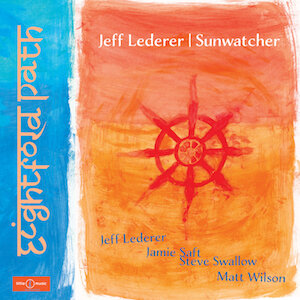Label: Clean Feed Records, 2021
Personnel - Pedro Carneiro: maestro; Pedro Melo Alves: drums, percussion; José Soares: alto saxophone; João Pedro Brandão: alto saxophone, flute; Albert Cirera: tenor and soprano saxophone; Frederic Cardoso: clarinets; Álvaro Machado: bassoon; Gileno Santana: trumpet; Xavi Sousa: trombone; Ricardo Pereira: trombone; Fábio Rodrigues: tuba; Clara Saleiro: flutes; José Diogo Martins: piano; Mané Fernandes: electric guitar; Luís José Martins: classical guitar; Luís André Ferreira: cello; Pablo Moledo: double bass; Alvaro Rosso: double bass; Mariana Dionísio: voice; Nazaré da Silva: voice; Diogo Ferreira: voice; João Miguel Braga Simões: percussion; João Carlos Pinto: eletronics.
Channeling his progressive inclinations into a 75-minute opus conceived for an enlarged version of the Omniae Ensemble, the Portuguese drummer/composer Pedro Melo Alves works with 21 like-minded cohorts to give the intended shape to his through-composed creation. The three selections on this record had been included in the previous 2017 installment, but on Lumina they are put together with singers, stringed instruments, brass, woodwinds, electronics and a pivotal rhythm section. These landscapes of sound unearth several energies and moods that are a challenge worth meeting.
Schematized with chained up sequences, “Obi” kicks off with dark-hued, low-pitched sounds that, later on, are defied by piercing flutes, electronic noise, rattling percussion, and both wailing and howling vocals. The singers become courageous in the darkly epic, quite cinematic progression that follows, and then a temporary suspension serves the quirkiness of guitarist Mané Fernandes before the ensemble digs into an open-minded texture over which a sax solo takes place. There are denser, pushing-forward movements contrasting with ethereal chants and pacific horn playing in all its transcendent glory.
“Phelia” is introduced by the poised piano playing of Jose Diogo Martins , which, blending tradition and avant-garde abrasiveness, emerges from an indistinct cloud of noise. Vocal and instrumental elements shade in careful moderation, and a somber mood results from the mixture of exotic and hapless vibes, here reinforced by bowed bass and cello. Subsequently, we have a thumping cadenced rhythm with vocal counterpoint leading to impetuous orchestral concentrations that gradually dissolve for a serene finale.
Backdropped with an angst-ridden texture, “Onírea” displays an authoritative tuba resonating closer to the buzzing torment created by irregular drum pluses, electronic disruptions and noise discharges. Rhythmic accentuations, swarming fluxes and soloing opportunities are provided, and everyone leans into the musical idea, contributing to the synergistic power of the experience. Meanwhile, the bandleader emerges from behind the drum kit fanning the fancy textures with precise articulation.
Lumina is clearly a winning step with respect to the previous Omniae installment, brimming with avant forays, challenging foundations and plenty of surfacing interjections and combinations.
A-
Favorite Tracks:
01 - Ubi ► 03 - Onírea








































